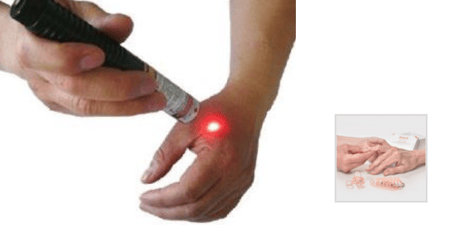What is Low Level Laser Therapy?
Low level laser therapy is a form of alternative medicine that uses laser light at low levels or near-infrared light. The light is applied to the surface skin of the body with the intentions of decreasing pain or inflammation, promoting healing of wounds, tissues, and nerves, or for preventing tissue damage. This is much different than the high level lasers that we know for surgical procedures to cut and destroy unhealthy tissue.
What is the proposed mechanism behind low level laser therapy?
Low level laser therapy is said to work through a photochemical effect (which also occurs with photosynthesis in plants). When cells inside tissue are stressed via disease and injury, the mitochondria (or power house/place where metabolism takes place inside a cell) produces harmful nitric oxide. The nitric oxide displaces needed oxygen from cells thus causing inflammation or cell death. When tissues absorb the light from the low level laser therapy (through a process not well understood yet), the nitric oxide is dissociated (or irreversibly split) allowing more oxygen back into the cells and therefore increasing tissue oxygenation. Via this mechanism, cell metabolism and mitochondria function is restored allowing health of the tissue. The absorption of the light is also said to increase cell proliferation and migration (regeneration) and to modulate levels of growth factors and inflammatory mediators.
Does low level laser therapy work?
Generally speaking, the use of low level laser therapy for purposes of decreasing pain and inflammation and promoting healing has been seen as controversial in the last few years. The ambiguity of the exact process and biochemical mechanism of this treatment contributes to the controversy.
In addition, research has not always supported the effectiveness of low level lasers, but this may be related to the need for very specific parameters in the low level laser treatment in order for the treatment to be effective. There are studies that do find this treatment intervention to be more beneficial than placebo and it is suggested that a large number of parameters for illumination (wavelength, fluence, power density, pulse structure, and treatment timing) need to be met in order to achieve this positive outcome.




